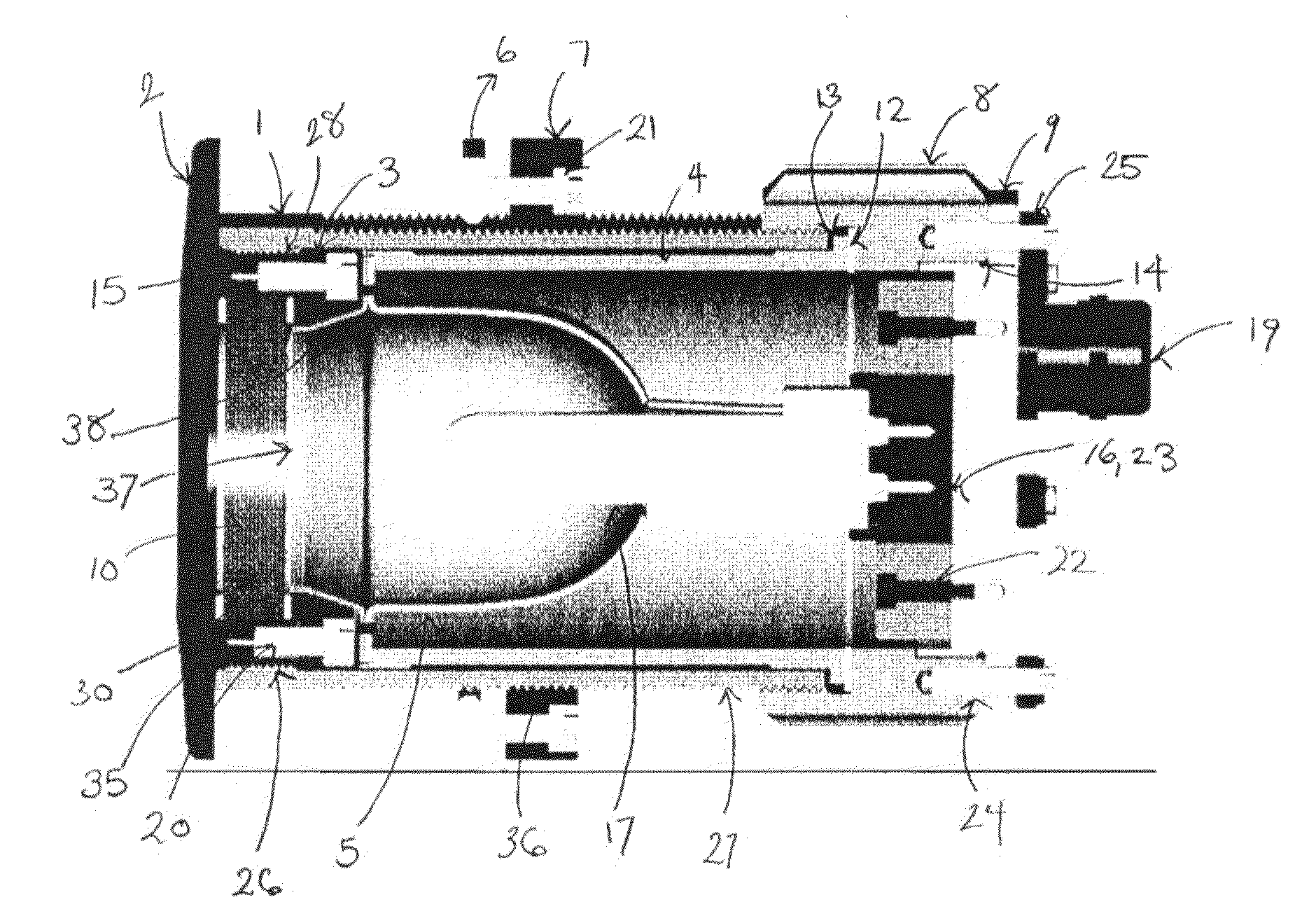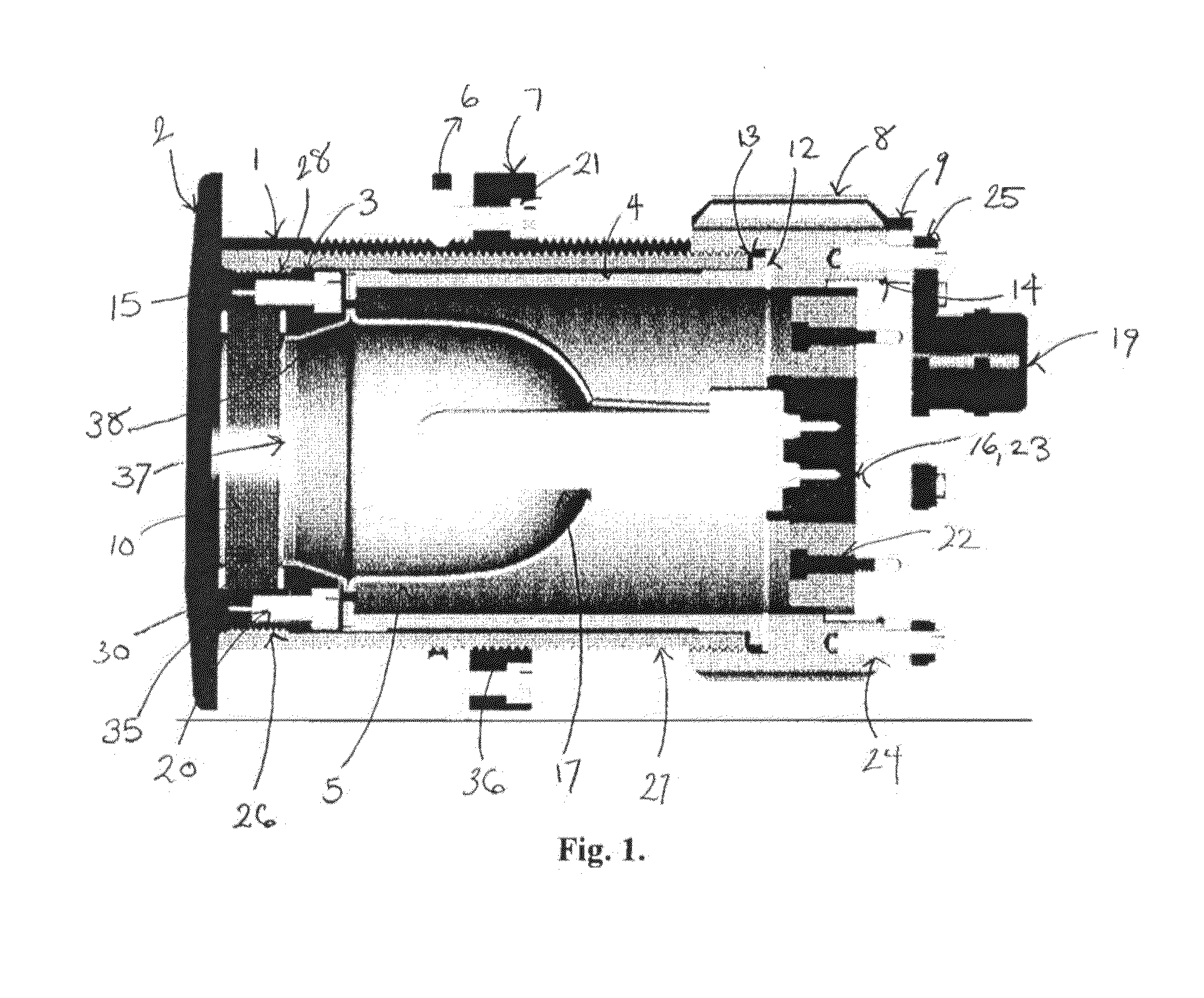Although such configurations provide substantial illumination of the
hull sides, they are not waterproof or watertight and therefore are placed substantially higher than the
waterline.
Furthermore, because the light rays are directed downward along the surface of the hull, illumination is restricted primarily to the line of the watercraft and therefore does not deviate outward into the surrounding water and may be easily obstructed by other accessories attached to the hull of the watercraft that are closer to the
waterline.
Also, lights mounted on the exterior of the boat often require replacement and repair from outside the boat rather than from the inside of the boat which usually is fairly cumbersome.
However, unless the height of the boat is relatively shallow, the depth to which the light penetrates the water is still very limited by the
light intensity as the
light source is placed well above the waterline at the
gunwale of the boat.
Thus, the conventional hull or
deck mounted lights do not provide sufficient lighting for visualizing harmful objects within the path of the watercraft or exploring the water around and below the watercraft.
Furthermore, lights extending outward from the surface of the boat are easily damaged in comparison to lights which are integrated into the surface area of the boat such that they are only slightly protruding or not protruding at all.
Welded configurations have the drawback in that if identical materials are not used,
welding is difficult and the integrity of the weld may be suspect when used in an
underwater environment where failure could be catastrophic.
Even where the
flange and light housing are welded together, there are many metals which cannot be welded tightly to one another.
Where the
flange must be attached to the hull by screws, several screw-holes must be bored into the hull thereby damaging the hull surface and providing additional inlets where water
moisture may create damage.
Where the
flange is snapped into place, it is difficult to obtain a substantially watertight seal between the flange, lens and the exterior opening of the thru-hull.
One downside to using such lenses is that the light shines out from the hull in a thin, pencil beam fashion thus necessitating the use of large numbers of lights spaced close together when lighting large areas of the hull is desired.
The costs of installation greatly increase due to the need to buy additional lights.
Additionally, where
bulb wattages of each lamp commonly range from 35 to 150 watts, installing large numbers of lights on a vessel can overload an inadequately designed electrical
system.
Where a vessel must carry its electrical source onboard while away from the dock, the need for an ample
battery storage or power generating capability for all anticipated uses creates a large practical burden as space is a premium on all vessels, particularly on smaller fiberglass boats.
Similarly, there is a practical limit to the weight that can be carried.
The smaller the boat, the more it is affected by the weight of a heavy battery.
Furthermore, large battery banks require considerable maintenance and can present significant safety concerns if a connection shorts or the batteries are overcharged and vent
hydrogen and gaseous
sulfuric acid.
However, generators have their own drawbacks.
Fuel, a commodity which is becoming increasingly more expensive and scarce in remote areas, is needed in order to operate a generator.
Also, generators have
inherent safety risks and require maintenance for their safe and efficient operation.
Where
underwater lights must be of
high intensity in order to be useful, the use of a large number of lights produces a significant amount of heat and dispersing that heat becomes an increasingly difficult problem.
When in an air-conditioned space, this increases the
cooling load and requires additional electrical power to remove the heat.
When in a non-climate controlled space, the heat can make an enclosed space uncomfortably warm for the occupants.
 Login to View More
Login to View More  Login to View More
Login to View More 


